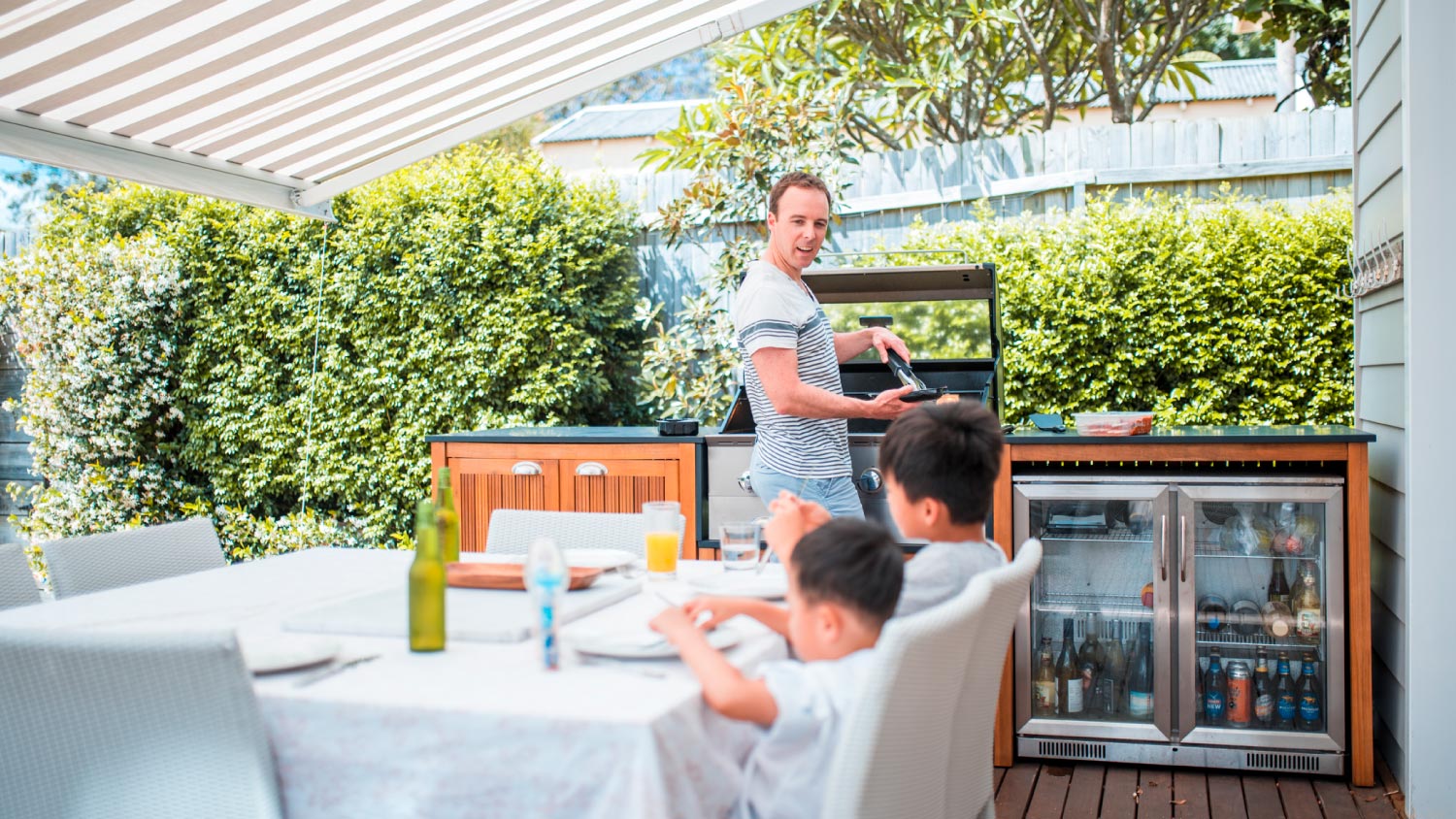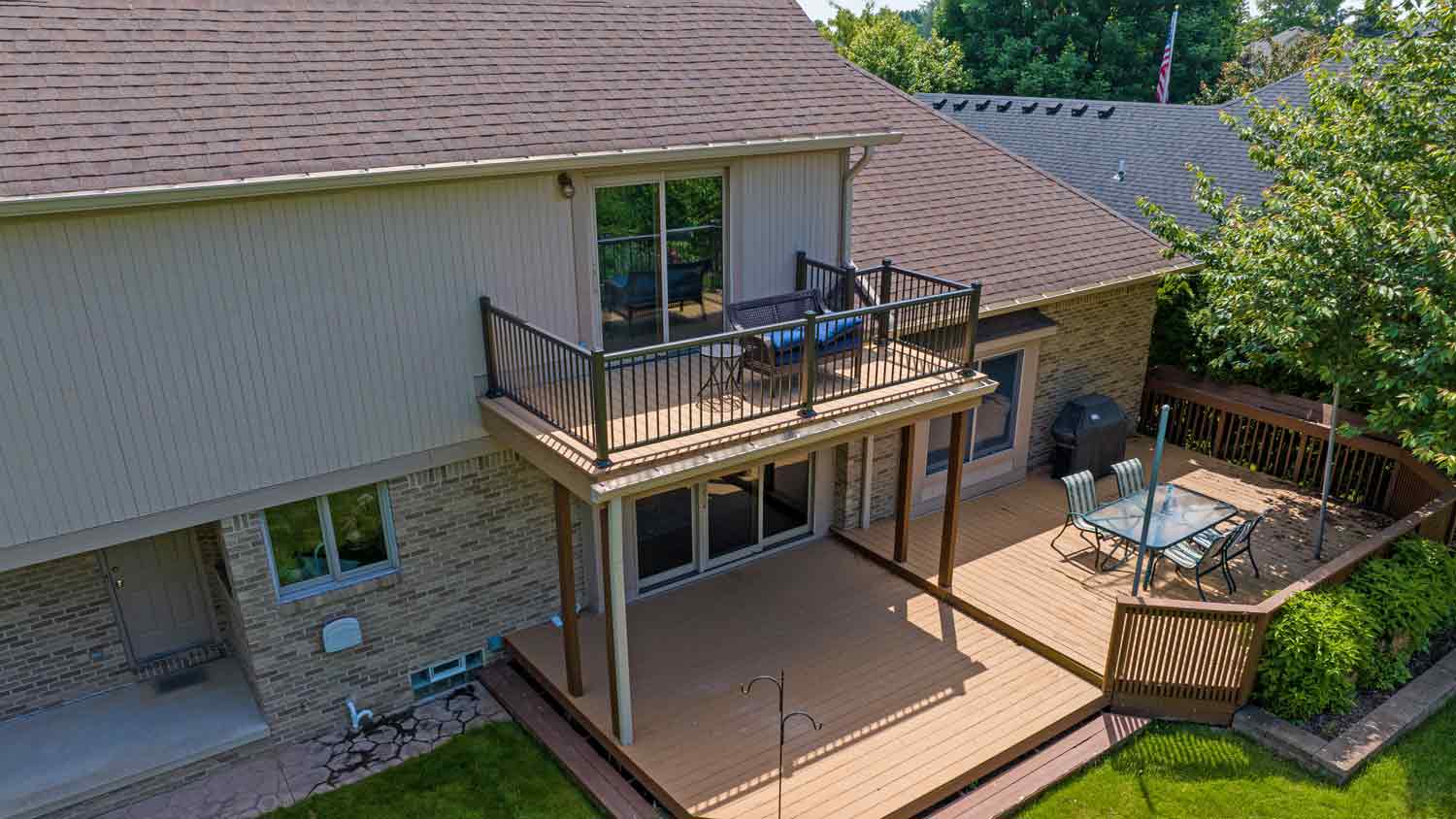15 Tips for Creating the Perfect Patio Plan
These tips should help set you on the right (garden) path


Taking full advantage of your backyard by creating an inviting outdoor space can make even a tiny home feel big. From al fresco dining to a backyard oasis, a patio is a refreshing way to add some square footage to your living area. Find out how to get started on designing the perfect patio for your lifestyle.
How Do I Plan a Patio Layout?
You’ve been dreaming of an outdoor space to call your own, and now you’re finally ready to get serious about it. These tips should help you figure out just what patio design works for you.
1. Measure the Space
Before designing your dream patio, find out what size patio you can accommodate. Measure to determine the square footage. Try to do a rough sketch.
2. Pay Attention to the Light
How much sunlight your patio will get is influenced by both the direction it faces and the time of year. The odds are you already have a good idea where the sunniest spot of your yard is, but take a few days to note the light at different times of the day. Don’t forget about tree canopies that provide shade in the summer, but expose areas in the winter.
3. Consider Existing Elements
Before tearing things down to make way for your future patio, try incorporating existing hardscaping or structural elements, such as arbors, retaining walls, and raised beds. Do you love your backyard babbling water fountain? See if you can work it in to create a patio plan for your ideal outdoor space.
4. Don’t Ditch the Deck
If you have an existing deck, think about how best to utilize it. If it’s low and next to the new patio, use it as the dining area and the patio for grilling. Handy local deck or porch contractors can widen a deck railing to create an eat-at bar or countertop. You can reconfigure stairs to create more space for a private patio below.
5. Consider Your Lifestyle
Ask yourself—what will you use your patio for the most? If you love to eat outside, an outdoor dining space or kitchen will probably be on the top of your list. If you prefer to lounge in a hammock all summer, make that part of your design. Get out a piece of paper, create a wish list, and prioritize the essential elements. This will help you narrow down where to spend your money.
6. Set Your Budget
No matter how much aesthetics and lifestyle factor in, your budget will ultimately be the biggest factor in most of your patio planning decisions. Can you DIY any of the patio design work? How much will you allot for materials, furniture, and landscaping? If you need a jumping-off point, the average cost to install a patio ranges from $1,800 to $5,200.
7. Check Out Permits
Even the best-laid patio plans can go awry when you find out your permits aren’t approved. Many cities have specific neighborhood guidelines about things like structural height, square footage of yard coverage allowed, and deck footprints. One of the advantages of working with a local patio professional is that they’ll already be aware of, and apply for, any permits you need.
8. Chat With Your Neighbors
Even if the work is legally permitted, when there’s major work that blocks traffic or creates excessive noise, it’s common courtesy to tell your neighbors what days and for how long they should expect it. Plus, it ensures you’ll get a good turnout when you host the first barbeque on your new patio!
9. Design a Dining Area
You’re going to want to spend as much time as possible on your new patio, so including an area for an outdoor dining area is often a must-have for most homeowners. Even if you aren’t designing a large outdoor entertainment space, a small table and chair set will give you a place for morning coffee or evening cocktails.
10. Consider an Outdoor Kitchen

An outdoor kitchen can eat up a lot of your budget in a hurry, but it’s still on the top of many home chef’s wishlists. The cost to build an outdoor kitchen can range, on average, from $5,500 to $22,000 or more. They can be as simple as a grill, or as elaborate as a custom pizza oven with quartz countertops. Although it can be an expensive addition, it’s generally cheaper to build an outdoor kitchen at the same time as a patio vs. the total cost of adding each separately.
11. Decide on Materials
When picking materials for a new patio, you’ll have two primary choices: a paver patio or stamped concrete. Paver patios are made of concrete paving stones, bricks, or natural stone. Stamped concrete is poured and stamped with designs that can mimic stone or brick. Both come in a myriad of colors and textures.
12. Look to Your Home’s Exterior
As you choose materials, look to your home’s exterior for inspiration. Do you have a brick facade? A brick patio will complement it. A modern home may call for a more contemporary stamped concrete look.
13. Don’t Forget About Plants

Your patio helps tie together your home and your garden. For this reason, plants are a vital element to any perfect patio design. Think about what plants will border the patio and what plants do well in containers. It’s also a way to incorporate colors from the rest of your garden to blend the patio seamlessly into your yard. Even if you’re working with a local landscape designer for your patio installation, you’ll want to let them know if there are any plants or colors you’d love to see.
14. Think About Any Structural Additions
Consider if you want privacy screens, a pergola, or any other structural element added to your patio. Light conditions can factor into your decisions. It may be unnecessary to add a pergola in a shady part of the patio, and building custom planters in an area that doesn’t get enough sun can be a waste of money.
15. Anticipate Patio Accessories
Furniture, outdoor rugs, birdbaths, hammocks, and other outdoor accessories are what will transform your patio into a beautiful outdoor living space. Have some fun shopping and picking out new pieces for your gorgeous new space.




- 17 Deck and Patio Ideas to Create the Backyard of Your Dreams
- 20 Porch Cover Ideas to Stay Cool This Summer
- How to Build a Patio: 10 Steps to Elevate Your Outdoor Space
- 31 Paver Patio Ideas to Turn Your Backyard Into a Showpiece Oasis
- 10 Decor Tips to Make Your Small Patio Feel Bigger
- Concrete Patio Thickness: Everything You Need to Know
- What is a Patio Home and Should You Buy One?
- 7 Small Patio Ideas That Will Maximize Your Outdoor Space
- Who Installs Concrete Patios?
- 11 Tips for Furnishing Your Patio to Make It Fresh, Fun, and Inviting










